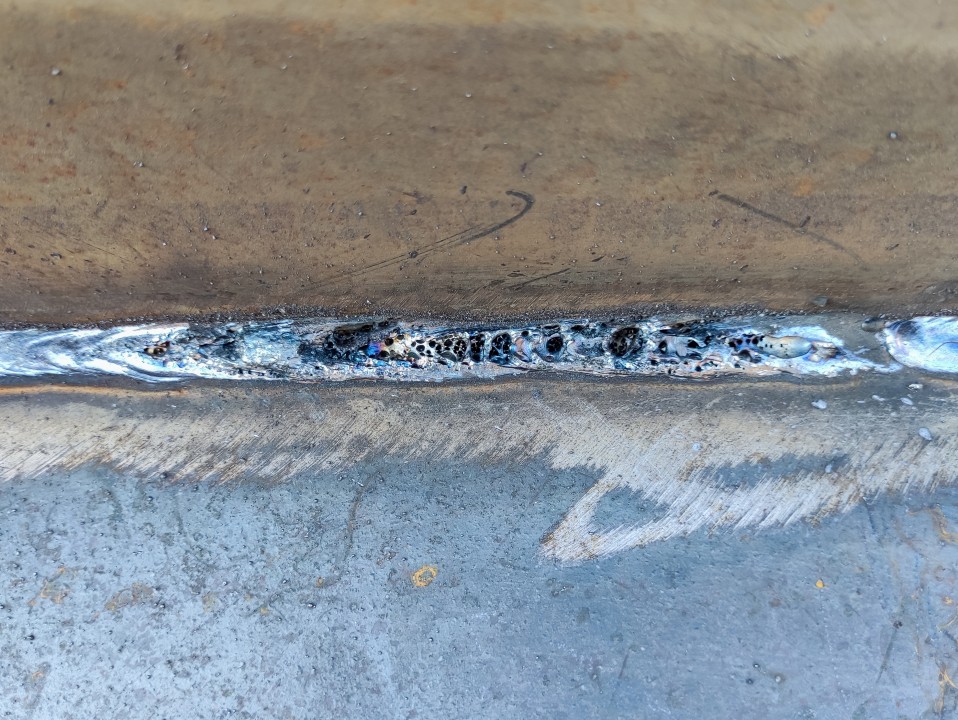Comprehensive Overview: What is Porosity in Welding and Just How to avoid It
Comprehensive Overview: What is Porosity in Welding and Just How to avoid It
Blog Article
The Scientific Research Behind Porosity: A Comprehensive Guide for Welders and Fabricators
Recognizing the elaborate mechanisms behind porosity in welding is essential for welders and producers pursuing impressive craftsmanship. As metalworkers explore the midsts of this phenomenon, they uncover a globe controlled by numerous elements that influence the development of these minuscule voids within welds. From the composition of the base products to the details of the welding procedure itself, a wide range of variables conspire to either exacerbate or relieve the presence of porosity. In this thorough guide, we will unwind the scientific research behind porosity, discovering its results on weld high quality and unveiling progressed methods for its control. Join us on this trip with the microcosm of welding imperfections, where precision satisfies understanding in the quest of perfect welds.
Recognizing Porosity in Welding
FIRST SENTENCE:
Exam of porosity in welding exposes crucial understandings into the honesty and top quality of the weld joint. Porosity, identified by the existence of cavities or spaces within the weld metal, is a common worry in welding processes. These gaps, if not properly dealt with, can compromise the architectural integrity and mechanical buildings of the weld, leading to possible failings in the ended up product.

To discover and evaluate porosity, non-destructive testing techniques such as ultrasonic screening or X-ray assessment are commonly utilized. These techniques enable the identification of internal issues without endangering the honesty of the weld. By evaluating the size, form, and circulation of porosity within a weld, welders can make educated decisions to enhance their welding processes and achieve sounder weld joints.

Variables Affecting Porosity Formation
The incident of porosity in welding is affected by a myriad of aspects, ranging from gas securing effectiveness to the ins and outs of welding specification settings. One essential factor adding to porosity formation is inadequate gas shielding. When the protecting gas, typically argon or carbon dioxide, is not effectively covering the weld pool, atmospheric gases like oxygen and nitrogen can infect the liquified steel, causing porosity. In addition, the sanitation of the base materials plays a significant duty. Impurities such as corrosion, oil, or moisture can evaporate throughout welding, creating gas pockets within the weld. Welding criteria, consisting of voltage, current, travel rate, and electrode kind, additionally influence porosity formation. Using inappropriate settings can generate extreme spatter or i loved this warm input, which subsequently can result in porosity. The welding technique utilized, such as gas metal arc welding (GMAW) or shielded metal arc welding (SMAW), can influence porosity formation due to variants in heat circulation and site web gas insurance coverage. Comprehending and controlling these variables are crucial for minimizing porosity in welding operations.
Impacts of Porosity on Weld Top Quality
Porosity development significantly compromises the structural honesty and mechanical residential or commercial properties of welded joints. When porosity is existing in a weld, it develops voids or cavities within the product, minimizing the overall strength of the joint. These gaps act as stress and anxiety concentration factors, making the weld extra at risk to breaking and failure under lots. The presence of porosity likewise damages the weld's resistance to rust, as the entraped air or gases within the voids can respond with the surrounding environment, bring about degradation over time. Additionally, porosity can hinder the weld's capacity to stand up to pressure or effect, more endangering the total high quality and reliability of the welded framework. In important applications such as aerospace, auto, or architectural building and constructions, where safety and durability are paramount, the detrimental effects of porosity on weld high quality can have extreme effects, highlighting the relevance of minimizing porosity with correct welding methods and procedures.
Methods to Decrease Porosity
Furthermore, making use of the proper welding specifications, such as the proper voltage, existing, and travel rate, is essential in stopping porosity. Maintaining a Web Site consistent arc size and angle throughout welding also helps reduce the possibility of porosity.

Using the ideal welding technique, such as back-stepping or utilizing a weaving activity, can additionally aid disperse heat evenly and reduce the possibilities of porosity development. By carrying out these methods, welders can properly lessen porosity and generate premium welded joints.

Advanced Solutions for Porosity Control
Implementing innovative technologies and innovative techniques plays a crucial role in attaining superior control over porosity in welding processes. In addition, using innovative welding strategies such as pulsed MIG welding or changed environment welding can likewise help minimize porosity problems.
Another innovative solution includes making use of sophisticated welding devices. For example, utilizing tools with built-in functions like waveform control and advanced power resources can enhance weld quality and decrease porosity dangers. Furthermore, the application of automated welding systems with precise control over specifications can substantially reduce porosity defects.
Furthermore, including advanced surveillance and inspection modern technologies such as real-time X-ray imaging or automated ultrasonic testing can assist in spotting porosity early in the welding procedure, enabling for instant restorative actions. In general, incorporating these innovative services can considerably boost porosity control and enhance the overall high quality of bonded parts.
Verdict
In verdict, comprehending the science behind porosity in welding is essential for welders and fabricators to create high-quality welds - What is Porosity. Advanced options for porosity control can further boost the welding process and ensure a strong and dependable weld.
Report this page